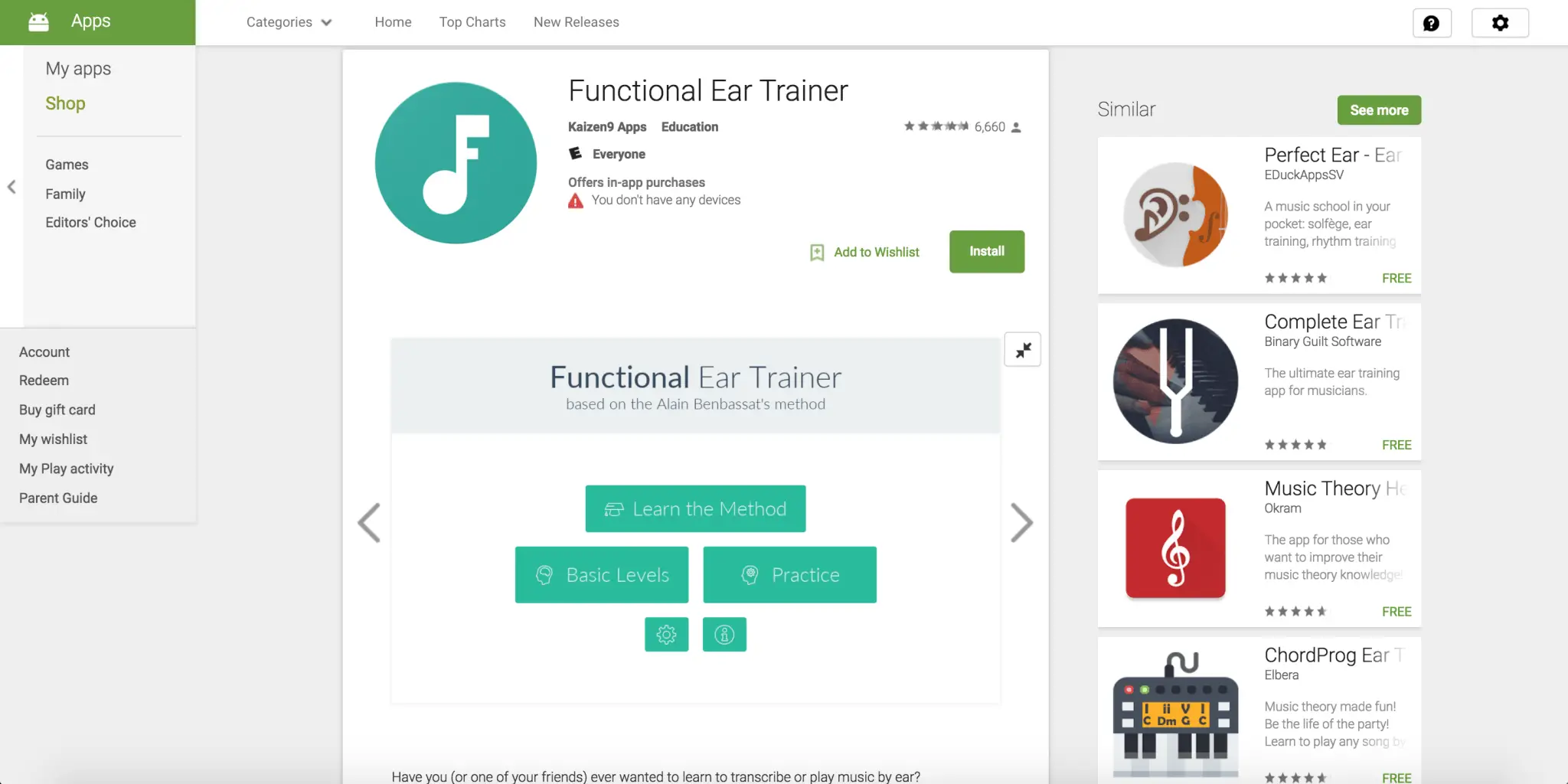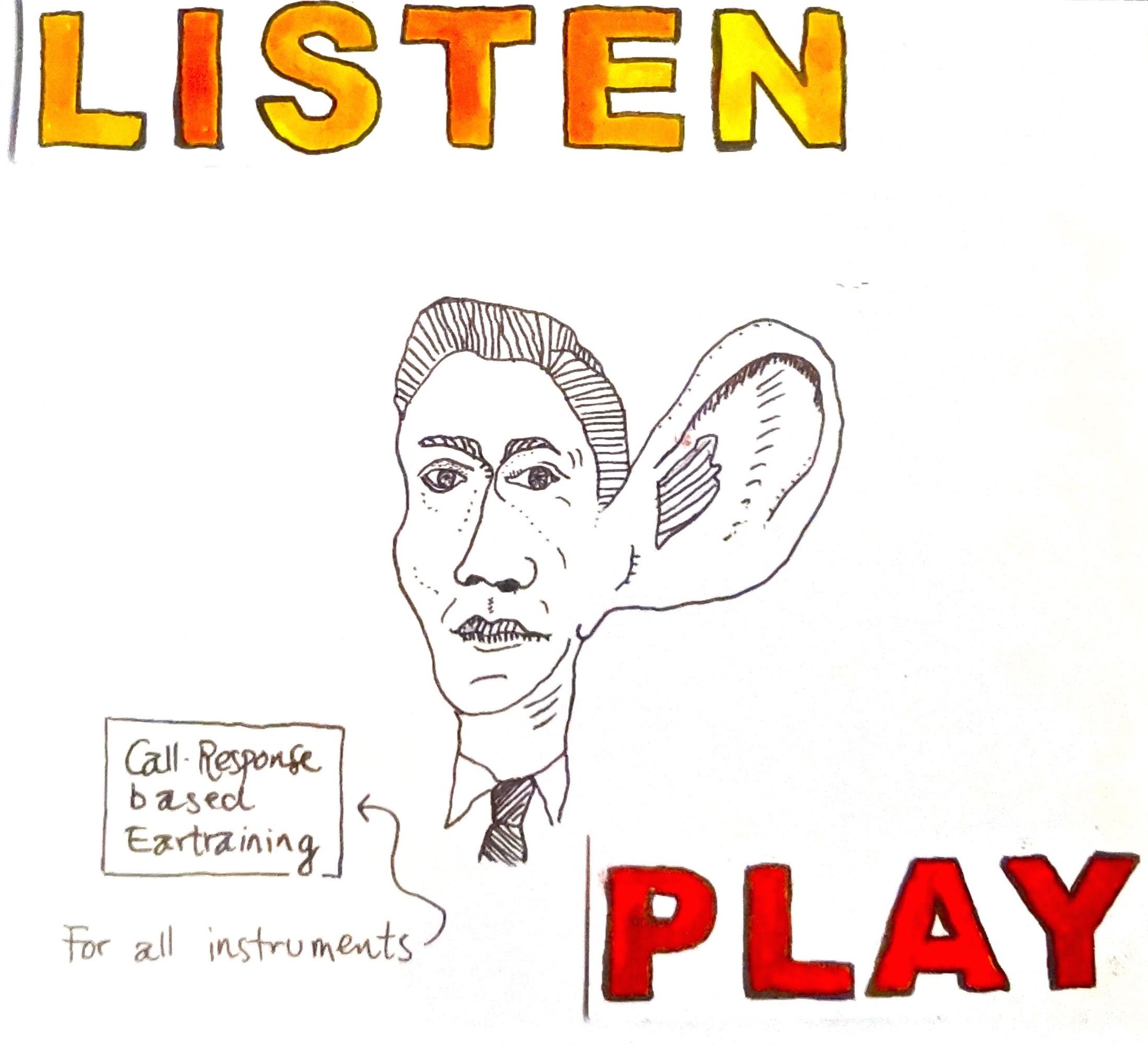

There are over 200 lessons in this course. You will first learn the concept of pitch before moving on to more complex topics such as rhythm, triads, harmonic progressions, and intervals. Here, you can learn all the core skills in music theory. Key featuresĮarMaster 7 comes with 4 training modes: A beginner’s course I worked with EarMaster for about 20 minutes on a daily basis, and within the first couple of weeks of using it, I found that my aural skills had considerably improved, and I was slowly mastering relative pitch. This allowed my sessions of practice to be more enjoyable since I was able to add my own chords and scales, as well as change the terminology used in EarMaster as I pleased.
#EAR TRAINER SOFTWARE#
I loved the fact that I could customize the software and configure my own exercises to suit my needs when it came to things like voicing pitch range, and key. Although I am yet to picture the sound of some notes without actually having to hear them first, I am slowly learning in hopes of being able to sight sing at the correct pitch.

I got to work on my rhythmical skill and pitch accuracy as well.

I was particularly interested in the sight-singing aspect of EarMaster 7 since I wanted to improve my skills in reading and singing music on the spot. I can hardly describe myself as an expert when it comes to music theory, so I went straight to the Beginners Course provided in the software. The main focus of the training provided is on practical exercises, with the written material limited to make learning easier. Another section you will find is the General Workshops, where you will find topics that cover everything from chords to melody. If you are new to music theory, you can take advantage of the Beginners Course which covers a wide range of topics including harmonic progressions. The training is broken down into several sections. EarMaster 7 comes equipped with over 2,500 music theory exercises that provide training at all levels covering sight-singing, rhythm training, and ear training. Since then, EarMaster has made several improvements to the product, adding more features in order to make it more efficient and easier to use. The first version of EarMaster was released in 1996 to a wider audience of musicians who wanted to train their musical ear. The initial product was simple and primarily targeted music students. By 1994, Hans had managed to develop the first software program that could be exclusively used for ear training. This situation motivated him to come up with the idea of utilizing computers to provide ear training. However, he could not find any suitable tools that he could use for ear training. Back in 1992, Hans was getting ready for conservatory training when he saw the urgent need to develop his musical ear. 👉 Click here to Learn More about EarMaster 7!ĮarMaster 7 is a music theory training software that was established by Hans Lavdal Jakobsen. Here are more facts I discovered from my research on EarMaster 7. It incorporates a huge number of lessons that cover varying levels of music theory. This music education software is meant to help you improve your ear for music, as well as gain skills such as sight-singing. One of the tools you can employ to help you out with this is EarMaster 7. As a result, it is important to work on your vocal technique along with training your ears to be able to sing in tune more consistently. When you are not in tune, your performance is doomed to suck, and your audience will be less forgiving. However, one of the most unappealing things is singing out of tune. Your voice may at times sound shrill or whiny, and your audience will probably let you get away with it. You can go for those high notes, you can mumble through a song, and you can definitely screech sometimes. As a singer, you can employ a wide range of vocal peculiarities during your performances and your audience will appreciate it, or in some cases, excuse it.


 0 kommentar(er)
0 kommentar(er)
